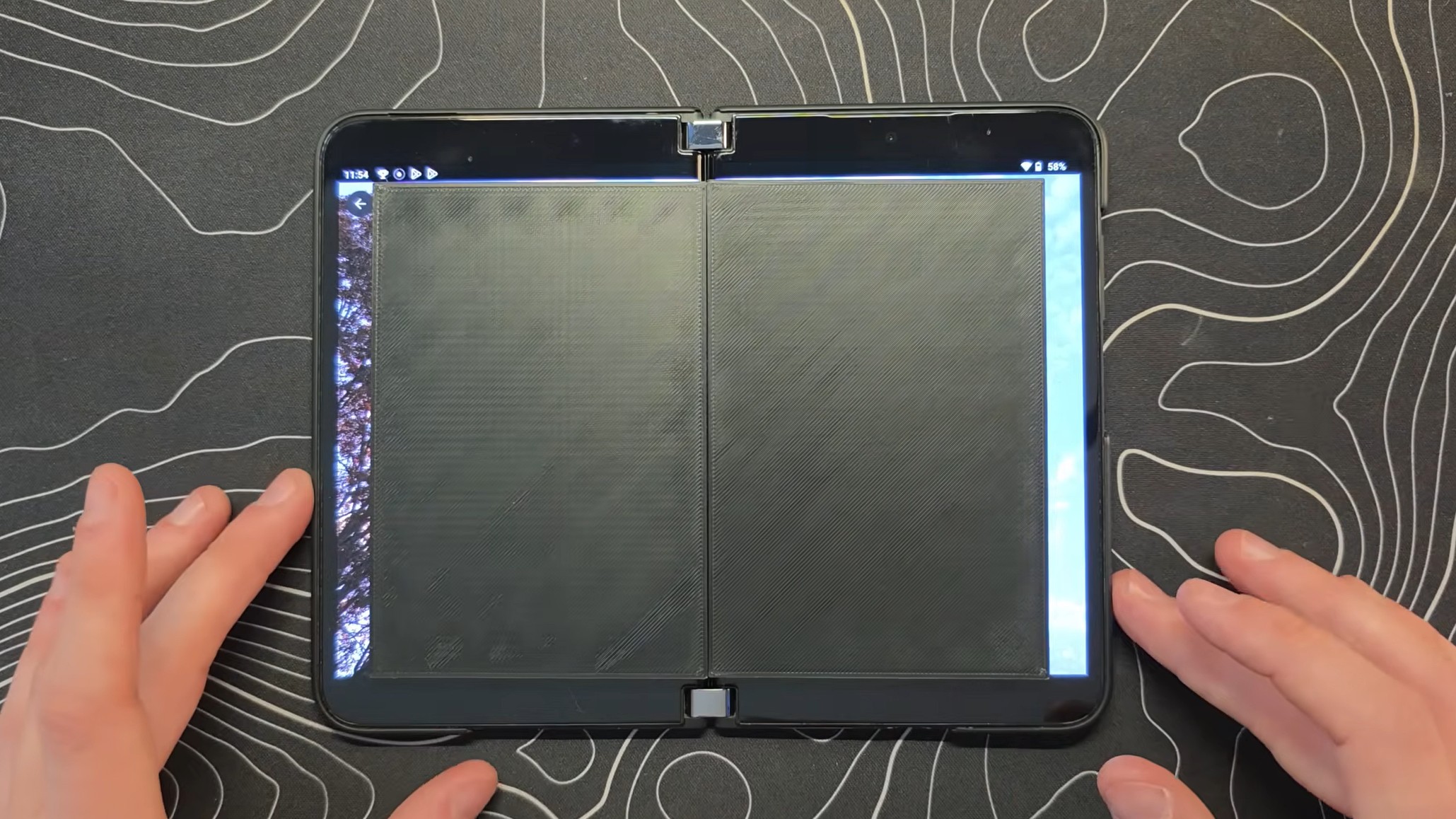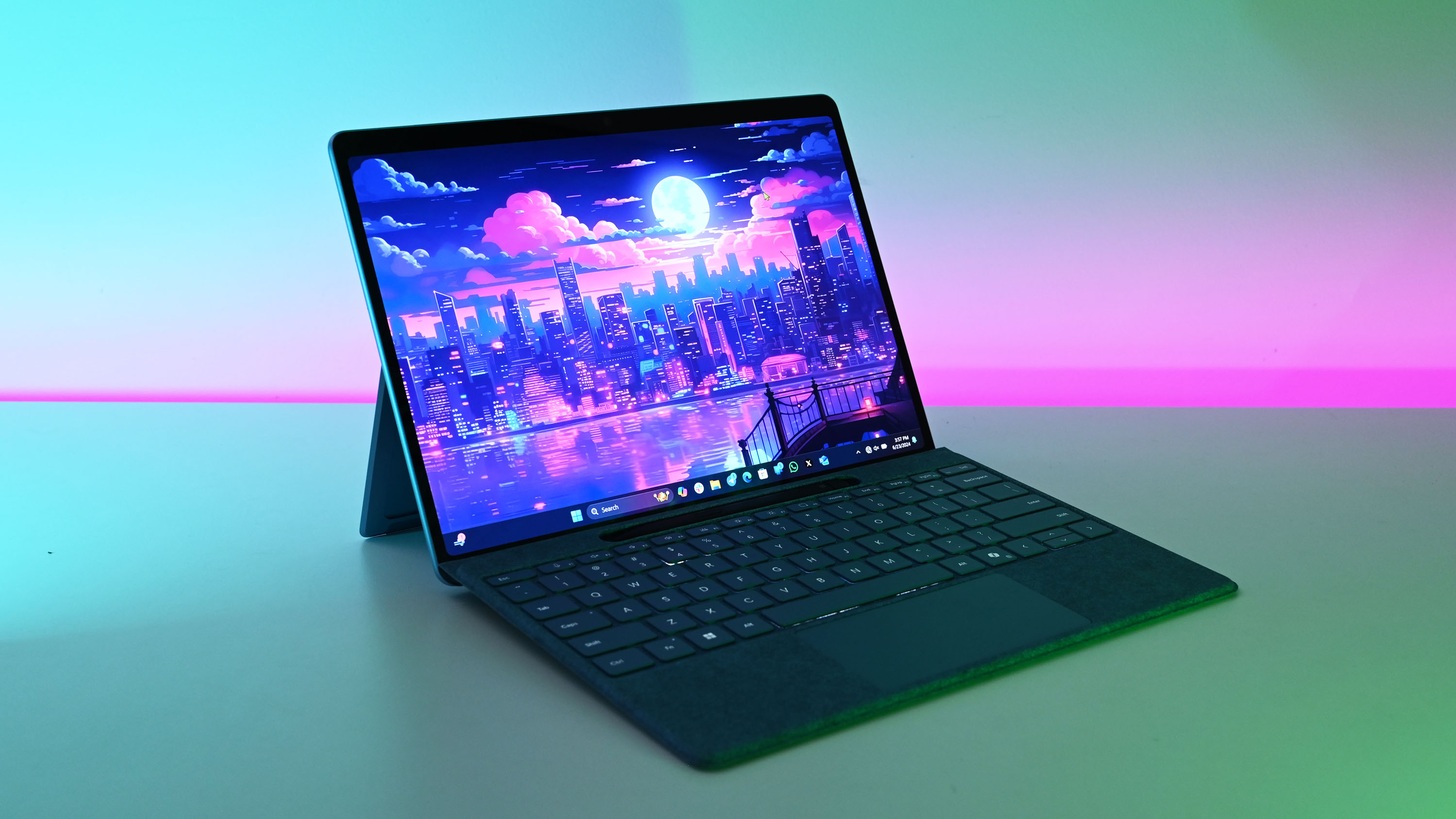Apple's upcoming iPhone Fold looks to copy Microsoft's Surface Duo — and that's genuinely great news
I loved the Surface Duo's short but wide aspect ratio, and it appears Apple is planning to bring that unique shape and size back with its upcoming foldable iPhone.

Enjoy our content? Make sure to set Windows Central as a preferred source in Google Search, and find out why you should so that you can stay up-to-date on the latest news, reviews, features, and more.
It's been rumored for eons at this point, but Apple's upcoming foldable iPhone looks to be all but confirmed to launch sometime next year, and thanks to recent leaks, we already know the rough shape, size and feature set of the hardware. For my fellow Surface Duo brothers and sisters, it's good news.
While the iPhone Fold won't utilize the Surface Duo's excellent dual-screen form factor, it will take on a similar shape and size. The Surface Duo was famously short and wide, compared to most other smartphones (including foldables) which are narrow and tall.
This shorter and wider shape made for an incredible typing experience on Surface Duo. It also gave apps more space, and made it easy to reach the top of the screen without the device feeling small. At no point did the OS or software ever feel cramped, even with its 5.6-inch screens, and that's because of how short but wide they were.
If the rumors are true, the upcoming iPhone Fold will be 5.5-inches on the outside, and 7.8-inches on the inside. The Surface Duo had almost the same dimensions, which tells me the iPhone Fold is going to try and offer a widescreen foldable display on the inside, which is perfect.

Most foldable phones today offer the foldable screen in an almost 1:1 aspect ratio, which kind of sucks for both productivity and media consumption. Other than the Surface Duo, the only other foldable I've used that didn't do this was the original Google Pixel Fold, which had a widescreen foldable display and made using it as a tablet so good.
A widescreen aspect ratio for the foldable display is important for a number of reasons. It makes multitasking with two apps side by side much more comfortable, as the apps have more room to show content. It also makes watching videos better, as there's less letterboxing compared to the 1:1 aspect ratio of most foldables.
The Surface Duo was the best multitasking phone I've ever used, and that's because the two 5.6-inch displays were treated like a single display that let you share content across them. It makes running two apps side by side super easy and enjoyable, and I'm hoping the same is the case on the iPhone Fold.
All the latest news, reviews, and guides for Windows and Xbox diehards.
It's not hard to assume the iPhone Fold will run some kind of iOS and iPadOS hybrid, letting you run more than one app at a time on the folding screen just like an iPad Mini. An iPhone that's capable of transforming into an iPad Mini is honestly the dream device, and I'm here for it.

Other rumored specs of the iPhone Fold include touch ID instead of Face ID, which is also another similarity to the Surface Duo. Apple is expected to put a fingerprint reader into the power button, just like on the Surface Duo 2. This makes authenticating into the device when both opened or closed easy.
It's also expected to have the largest battery ever fitted to an iPhone, and a creaseless display, which would be a first for the foldable category. While the Surface Duo didn't have a crease, it did have a gap between the displays. Of course, Apple's folding phone is rumored to cost a lot of money, somewhere north of $2,000.
Ever since Microsoft killed the Surface Duo, I've been on the hunt for a device that matches that aesthetic and form factor as closely as possible. So far, the only other device that even came close was the original Google Pixel Fold, featuring a similar shorter and wider aspect ratio that made multitasking easy.
The upcoming iPhone Fold looks to be the closest to the Surface Duo yet. It will be almost the exact same shape and size, with the only difference being the internal screen is one foldable display instead of two glass panels. While I would prefer two displays like on the Duo, I can settle for one foldable display if the software does enough to make using both halves of it easy.
So, it's not an exact replica, but it's close enough. Its rumored shape and size alone makes me incredibly excited. What are your thoughts on Apple's rumored folding iPhone? Let us know in the comments.
Black Friday 2025 - quick links
- All our TOP recommended Black Friday deals: Just the best
- Mini PC deals: up to 47% off tiny PCs
- GPU deals: early price drops on NVIDIA RTX before they go up
- Microsoft Surface deals: save up to $500 on premium PCs
- Xbox accessories: best deals on gadgets for your Xbox Series X|S and PC
- Gaming laptop deals: the best laptops for the best price
- Xbox controllers: our top picks for best controller deals
- ANC headphones: great Black Friday deals on the best ANC headphones
Even more Black Friday deals: - Dell deals: 13 deals from Dell.com that you shouldn't miss
- Best Buy: 34 hottest discounts on laptops, monitors, gaming, and more
- Walmart: 7 top laptop deals you shouldn't miss
- Samsung monitors: the best Samsung display deals we've found
- Retro gaming: handhelds, arcade machines, old school consoles, and more
- Gamer merch: Blizzard’s Warcraft, Overwatch, and Diablo IV collectibles
- Game keys: 10 PC game codes are even cheaper at Loaded (formerly CDKeys)
- Accessories: Even more PC accessories starting at $17

Follow Windows Central on Google News to keep our latest news, insights, and features at the top of your feeds!

You must confirm your public display name before commenting
Please logout and then login again, you will then be prompted to enter your display name.
